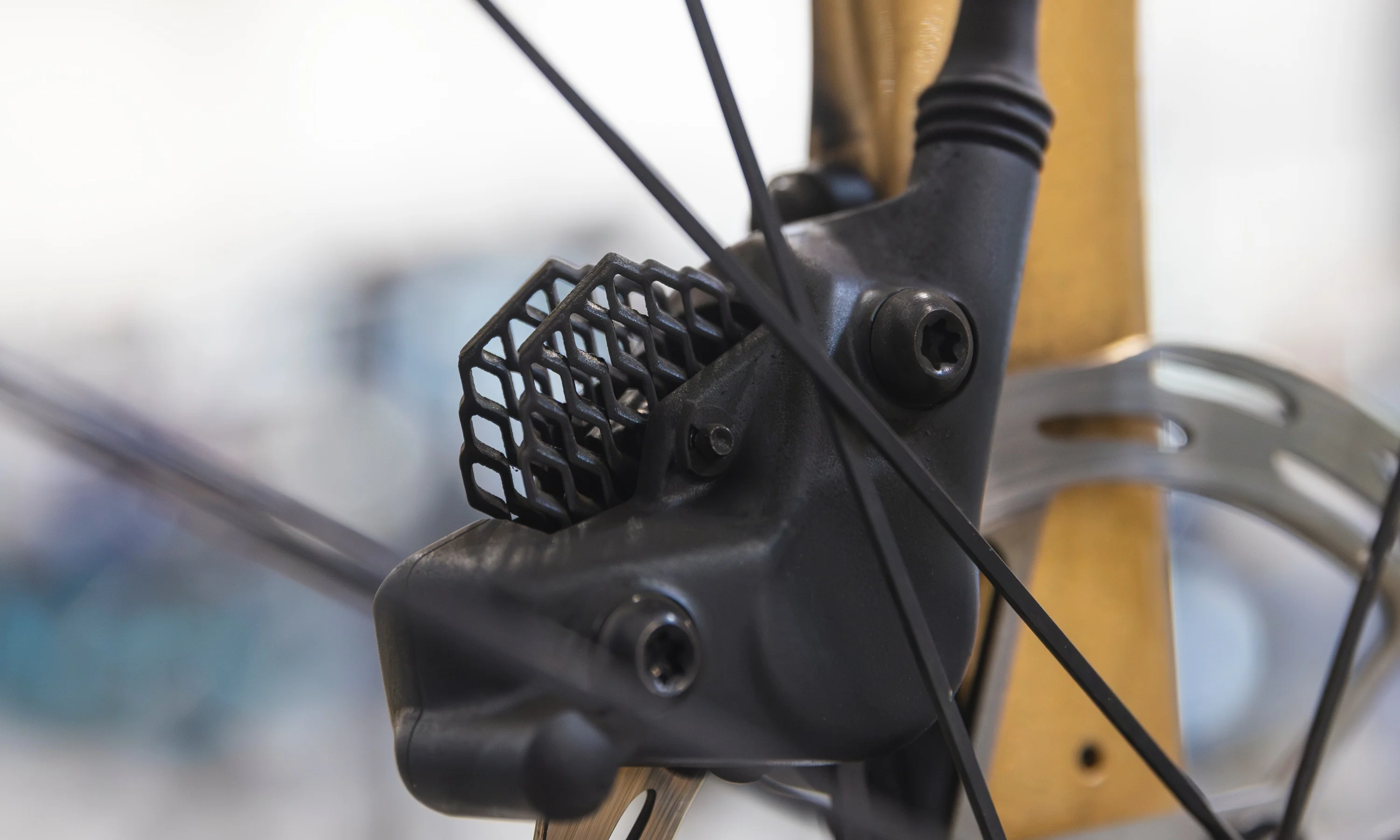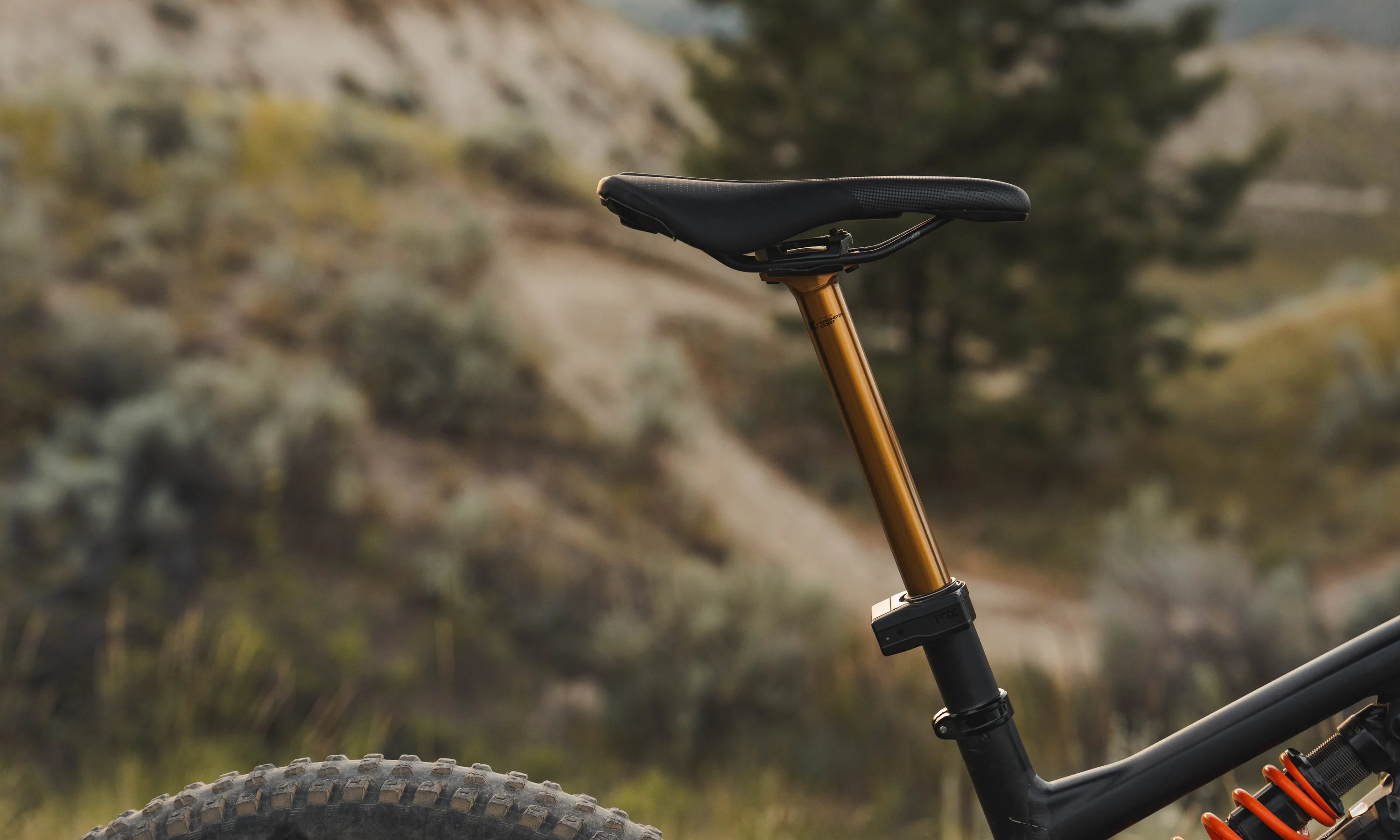Check out our current Santa Cruz collection.
The Original Hightower
The Santa Cruz Hightower emerged in 2016 to plenty of hype. The talk online was that the much-loved Tallboy LT was finally being reincarnated, but as a longer, lower, and slacker machine, and thus so shred ready that it needed a completely new name.

I was fortunate enough to spend the last fall through the spring aboard a Hightower. I rode it on the Front Range, in the high alpine, in the desert, on cross-country trails, and even on the steepest, hardest trails I’ve ever dared ride. I can honestly say that I’ve loved every moment of it.
The Hightower exists in an interesting category for bikes today. With 135mm of rear travel, it isn’t what anyone would refer to as a “big” bike. It falls more into the “trail” category; efficient, versatile, and just long-legged enough to put a smile on your face when you hit the occasional gnarly section.
It really wasn’t the type of bike meant to slay bike parks, downhill runs, and enduro stages. But I never felt like I needed to shy away from such riding aboard the Hightower, and as trail bikes have become more refined and capable, plenty of riders have chosen to use mid-travel bikes like the Hightower as a one bike solution to conquer trails that once required something much burlier.
I had an epiphany one day when I saw that the Santa Cruz Enduro Team were all racing the Hightower at the Enduro World Series. I was surprised that they hadn’t picked the big travel Nomad or even the Bronson. The key to the Hightower’s racing prowess lies in the larger diameter 29” wheels. Despite their detractors and haters, in the last few years 29” has finally blossomed into a truly competitive wheel size for hard riding and racing. It promises higher speeds, better rollover, and more traction.
Before I knew it I was buying into the hype and I traded in my 160mm 27.5” enduro bike for a brand new 2017 Hightower CC shod with ENVE’s ultra-stiff M70 Thirty HV wheels. The 29er wheels took a small period of adjustment, but their benefit was immediately apparent. Riding rocky and bumpy trails I could sense how they held more speed, requiring me to accelerate less to get the bike back up to speed after rough sections. After a few months I became a convert, and though I may buy a 27.5” again in the future for fun, for racing purposes, I may never go back.
The Hightower features more modern geometry along with all of Santa Cruz’s current crop of bikes, though it does still sit on the more conservative end of the spectrum. It isn’t very long, or extremely slack. It sits in the Goldilocks zone with a 67-degree head tube and 430mm reach in medium. This helps it feel stable and inspire confidence in fast and steep terrain without feeling too cumbersome at slower speeds.

The feature of the bike that really stood out most for me was the combination of the low bottom bracket and incredibly short chainstays, It gives the bike a very rear focused character, more than happy to manual, drift, and dive into corners, smashing every rut and berm in sight. The bike is easy to boost and shralp, and I can do it with more confidence than I had before as the bigger wheels seem more forgiving, letting me get away with more when I get a bit off line.
With its VPP suspension, the Hightower also pedals extremely efficiently. At the recommended 30% sag there’s little pedal-bob or squat. It actually seems to pedal no worse than the current Tallboy, and if you build it right, it doesn't weight that much more, making it a seriously good for going uphill. The rear end does feel like it gets a bit more hung up and stiff feeling in chunky uphill sections compared to say Yeti’s Switch Infinity bikes, but not enough for me to really feel like you’d really be at a huge disadvantage when climbing.
The ability to run 27.5”+ tires is also a feature attractive to those who desire more rubber. To maintain geometry the Hightower employs a flip-chip in the upper linkage and uses a 150mm fork to compensate for the slightly smaller diameter wheel and tire combo. Generally, I preferred the bike in the racier feeling 29er trim with the fork jacked up to 150mm, giving me a slacker headtube. I even spent some time on a 160mm fork to really make the front of the bike a monster truck. To me, the benefits of more travel in the front were massive, with minimal downsides. The bike didn’t seem to climb any worse and on downhill sections, it felt immensely more capable.
The biggest improvement I made was replacing the stock Monarch shock with a more downhill oriented model with a piggyback. With only 135mm of travel, I felt like the addition of a burly shock with more tuning options helped the bike feel more composed on the more technical terrain.
My only real complaint with the bike is the lack of tire clearance in the back. The short chainstays that make the bike feel so good also prevent you from running anything much larger than a 2.3”- 2.4” tire. The Maxxis DHR II 2.4” was on the limit, requiring me to deflate it slightly to install the wheel, and occasionally scratching the inside of the chainstays.
Overall, my love affair with the Hightower is one that I’m glad I’ve had. For the last 6 months, it’s truly been my one do-it-all bike. I choose it for the majority of my riding, and for that reason alone I think Santa Cruz nailed it. There’s a reason you see so many out on the trails.
The New Hightower LT
In my short time owning and riding the Hightower, I did occasionally find myself in gnarly situations where I bottomed out hard in the rear and felt slightly outgunned. The Hightower is plenty capable, and I had modified mine with a longer travel fork and a more downhill oriented shock, so it gave me enough confidence to often just ride it out when I got into trouble. But still, as a more downhill focused rider, I curious about getting a bit more travel.
I wasn’t alone. Online there were forum posts by intrepid riders who had modified their Hightowers by “long-shocking” them to eek out slightly more travel in the rear. Rumors also began appearing that the Santa Cruz was testing new linkages for their pro racers to get more travel.
Then this year, Santa Cruz finally pulled the trigger and pushed the Hightower into the realm of “big” bikes with the release of the new Hightower LT. Using a new rear triangle and linkages, the LT offers 150mm of travel in the rear, paired with a 150mm fork as standard. The standard Hightower is still available, with the LT option aimed more at enduro racers, park rats, and heavy hitting trail riders. Since its introduction, the Hightower LT has become the weapon of choice for the Santa Cruz Enduro Team.

When the LT arrived, I felt compelled to make the leap and promptly traded my beautiful 2017 Hightower CC for an equally beautiful 2018 Hightower LT CC. With the cockpit and saddle set in the same position as my previous Hightower, the LT essentially fit the same. The LT has a slightly shorter reach, due to the new rear triangle and longer fork, but it isn’t enough to feel wildly different. The head tube is a slacker 66.4 degrees, making it slightly more confidence inspiring when on steep terrain. I do plan to rake the bike out even more with a 160mm fork to make it a real downhill focused machine.

Honestly though, in the few rides I’ve done, the LT does not feel that much different from the standard Hightower. Adjusting to the new bike took nearly no time at all, and I was up to speed immediately. Personally, I think this is mostly a good thing, as I love how the original Hightower handles. The chainstays are still short, and the bb is still low, so the bike still rails like its smaller brother. The pedaling characteristics are virtually the same as the Hightower, sharing the same efficient VPP layout. If you already have the standard Hightower, you really aren’t missing out on much.
The only real difference I feel riding the LT vs the Hightower is the increased confidence I have in the rear end to not bottom out harshly during big hits. The bike comes standard with a Fox 36 fork and DPX2 shock, pointing to its sendy intentions, while the additional 15mm of travel provides the extra little bit I need (which could be mostly mental) to send the bike deeper off big jumps and drops. The most exciting thing to me though is that the new triangle is actually a tiny bit longer, which isn’t really noticeable when riding, but allows you to now fit a beefier 2.5” tire!

Additionally, the understated Santa Cruz Reserve carbon wheels available with newer 2018 models are some of the best carbon wheels I’ve ever ridden. They’re light, and unlike the ENVEs on my previous Hightower, they never seem to feel overly stiff, providing consistent and beautiful trail muting compliance. The LT only comes in 29er trim with no flip chip, so that is another thing to consider if you’re interested in trying plus tires.
If the extra travel helps you mentally, then it’ll likely still be invaluable to your riding. Since the LT pedals just as well as the Hightower, then it may be worth it to carry the extra 15mm around, just to have some insurance for when you get into trouble. However, I say just pick your Hightower based on which color you prefer. Personally, I’m excited to push my limits this season aboard the eye-searing Wicklow Green Hightower LT. The Hightower and the Hightower LT are both complete and capable bikes that will be able to do whatever you ask of them. Whichever you choose, I think you’ll be happy.
Check out our current Santa Cruz collection.
Comparison of Hightower vs. Hightower LT|
Bike: |
Hightower |
Hightower LT |
|
Wheel Size Compatibility |
29” / 27.5”+ |
29” |
|
Fork Travel |
140mm (29er) / 150mm (27.5”+) |
150mm |
|
Rear Travel |
135mm |
150mm |
|
Head Tube Angle |
67° / 66.8° |
66.4° |
|
Seat Tube Angle |
74.3° / 74.1° |
73.7° |
|
Stack (Size M) |
609mm / 610mm |
614mm |
|
Reach (Size M) |
430mm / 428mm |
423mm |
|
Chainstay Length |
435mm |
438mm |
|
BB Height |
335mm / 337mm |
338mm |

Bruce is a writer who loves getting his bikes dirty, trying new tech, and riding tough trails that make him suffer for hours at a time.




























